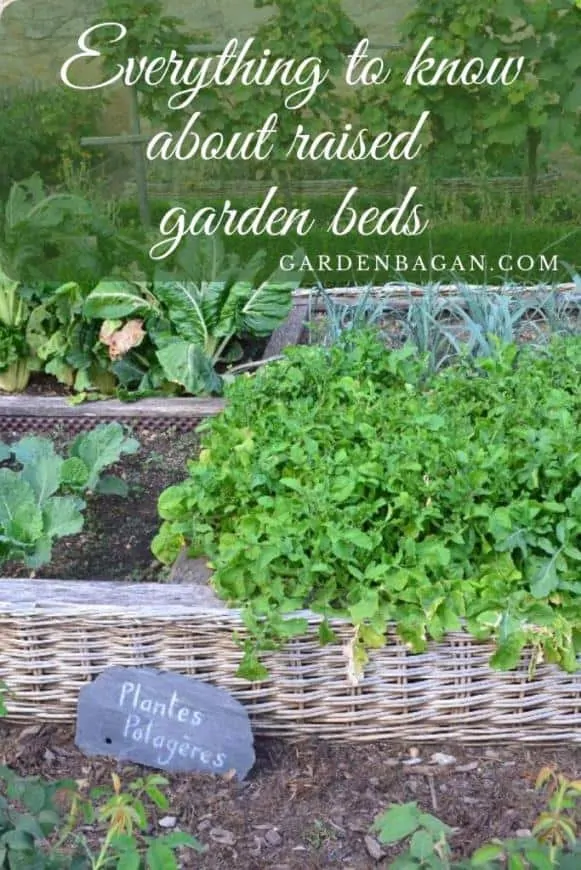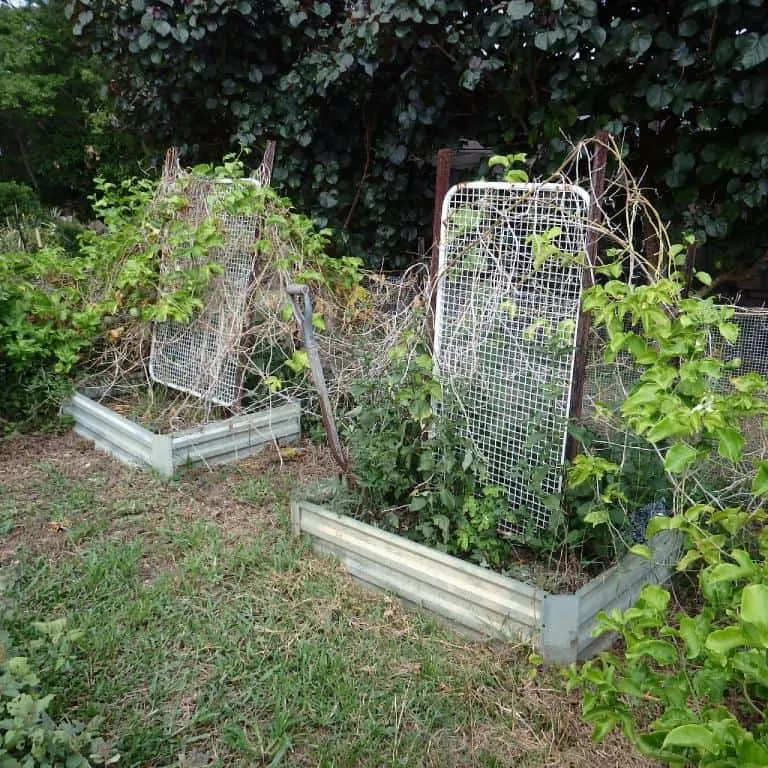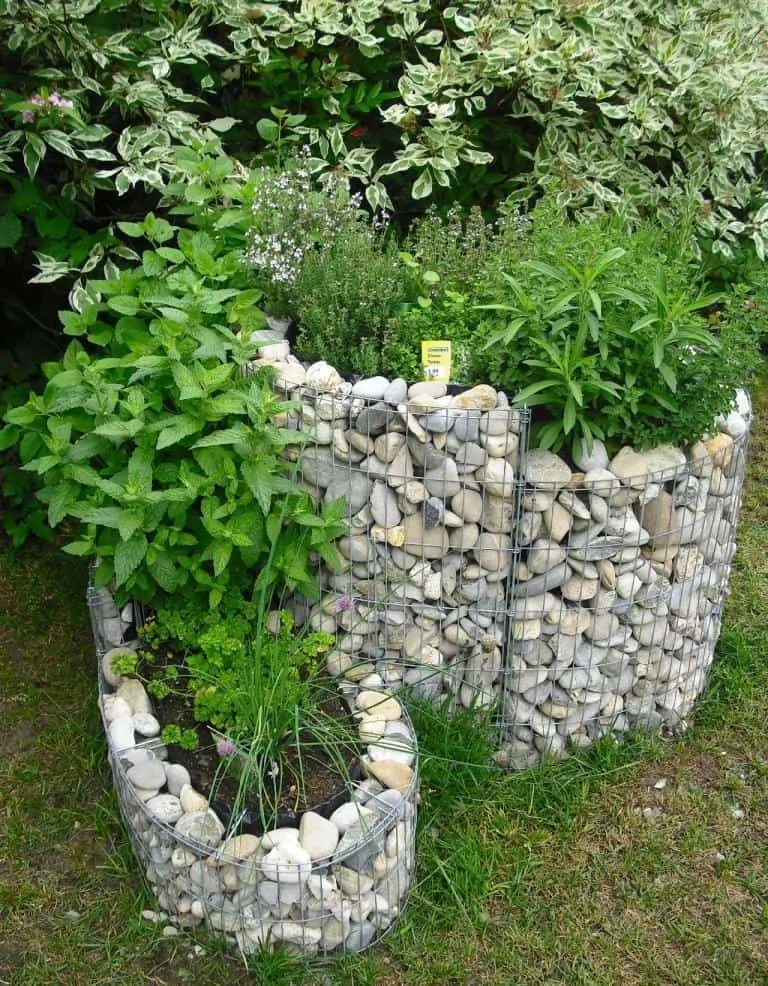Being a gardener we all know what a raised bed is? If you don’t then here’s a short and simple answer for you. A raised garden bed is a flat growing area created just above the garden level. It is distinct enough to be easily noticed. Also, it adds beauty to the garden. This consideration gives rise to another important question- Why do we need a raised garden bed? We do have a garden so what is the need for a raised bed?
It is not necessary. Yes, having a raised garden bed is not necessary unless you are facing these problems in your garden.
- Waterlogging
- Poor soil quality
- No Room for more plants
It is obvious that room for plants is not a common problem in the garden. The main reason for having a raised bed instead of a flat ground bed is waterlogging and poor soil quality. Other than that, raised beds are good for high yield and for decorative looks.
A raised garden bed is just like an ordinary flatbed with some extra care and effort. So it is created specifically to fulfill certain gardening needs. We will discuss all these factors in this post. Keep reading for more interesting stuff.

Read my last post: How to increase flowering in Portulaca? Moss Rose Blooming tips
Everything to know about raised garden beds
- What type of Raised beds should you choose?
- What time is best for making raised beds?
- Which location is best of raised garden beds?
- What type of soil to choose for raised beds?
- Which plants are best for raised garden beds?
- How much time required for this?
- How much it costs to have your own raised garden bed?
- What are the watering needs for any raised beds?
- Problems with raised garden beds?
- How to maintain raised beds for multiple seasons?
These are the 10 important questions to know about raised garden beds. We will discuss each one in detail.
Before proceeding, let us sum up what we know about raised beds? Gardeners love raised beds. It not only adds beauty to the garden but also provide comfort in traditional gardening. We can grow different plants together or separately in any raised beds. Maintaining moisture and nutrition is quite easier than traditional gardening beds.
Things you will need
Also read: How to make potting soil for indoor plants?
Types of Raised Beds
There are mainly three types of raised garden beds. This classification is mostly based on the type of construction and materials required to make a raised bed in your garden.
- Raised ground beds
- Supported raised beds
- Containerized raised beds
Raised ground Beds
These are the most common type of raised beds. No material support is required. Instead, you just have to fill some extra soil in a small area to make it a raised garden bed. Mostly these beds are small in size. These are simply elevated soil heap over the ground.
2-5 feet area is enough to create the raised ground beds. You just have to take some extra soil and dump it over the spot. At least 6 to 8inch soil is required to fill the bed. This type of raised bed is so common that most of the time we don’t even notice it while working.
Raised ground beds are good for common garden vegetables and flower plants. Most of the time either we raise the bed around any plant or simply raise the level of the whole portion of the garden.
Raised ground beds are commonly used to avoid waterlogging. It is really an effective technique if your garden is slightly low. Just a 6inch height can protect the plants from root rot diseases
Once created it can be used for many years. You just have to maintain and reshape the edges before every season. The soil will settle down with time. Therefore, you should add organic matter to the soil once in a while. The earthworms and other friendly organisms will turn these into the soil. This will reduce the need for extra fertilization.
Just be careful while working on edges, it can break easily. Don’t walk over the soil or it will compress and become hard.
Supported raised beds

The supported raised garden beds are similar to ordinary raised ground beds. The only difference is with the extra support it has to protect the edges. The support is useful to get some extra height for the raised beds. We generally use wooden planks, bricks, or tiles to support the edges of the raised ground beds.
You can make supported raised beds bigger than 5feets. The entire garden can be divided to form blocks of raised beds. The extra support like a wooden plank is useful to hold the soil as well as to provide effective room for movement in the garden. Now we can move over these support materials without stepping over the soil.
You can start with an ordinary raised bed, Add something strong to support and hold the soil. Use anything that fits your need. Old bricks or stones do the best for this job. Wood is a good option but it will increase the cost for overall setup.
These kinds of raised beds are best for vegetable gardening. You can also grow herbs and flowers in these raised garden beds.
Read this: Can you use garden soil for indoor plants?
Containerized raised beds
These are the most organized type of raised beds. You will need some support materials to prepare these. Mostly we use wooden planks to make containers to hold the soil.

Raised beds are mostly prepared on the ground level. But a containerized bed can be made anywhere above the ground level. You don’t even need soil base to start.
Just make a container big enough to fulfill your needs. It should be at least 2-3feet wide and 10″ to 15″ deep. The length of these raised beds entirely depends on the need and availability of resources.
I would suggest making a containerized raised beds big enough to grow and small enough to maintain easily. These raised garden beds are best for all sorts of plant cultivation. Containerized raised garden beds are the best option for terrace gardeners.
Ideally, vegetables are considered best for these beds but you can grow anything that fits in your containers. Go it–
Fruits like lime, lemons, oranges, pomegranate, and papaya are some easy to grow plants for containerized raised beds.
These beds are more manageable and effective for most of our kitchen garden plants.
The only difference between these three types of raised beds is the complexity of preparation. The purpose is always the same. Your efforts and availability of resources will decide whether you succeed or not.
Best Time for making raised garden beds
Late fall to early spring is the ideal tie for raised bed preparation. Though in many regions frost is a big problem during fall, if your bed is ready then spring will be greener.
Avoid working during heavy frost or during monsoon season. This does not mean that you have to wait for the whole year. You can start at any time anywhere in your garden. You just need some knowledge and resources like wood and soil.
The best location for raised beds

Location is one of the most important factors for healthy plant growth. Generally, we like to grow flowers and vegetables in the raised beds. So Selecting a bright sunny spot is the first consideration.
There is only one option and it is your garden especially when you are preparing for a raised ground bed, with or without any support. You are free to choose any spot only if you choose the containerized raised beds.
At least think once for the comfort of you, your plants, your family members, and sometimes care for your neighbors.
After all, you must keep these in mind-
- What type of plant do you choose?
- Where do you live? The specific climatic condition affects the growth of the plant.
- Do you have a garden? Even if you don’t have one then also try once on your terrace. I hope you are allowed to do so.
Try to answer these three questions. You will definitely the best spot for a newly raised garden bed. I don’t have much space in my garden so I have made a small containerized raised garden bed in my terrace, you can do so.
What type of Soil is good for raised beds?
Soil is very important for the growth of any plant. You may have read or heard in many videos that buying prepared soil is the best option for raised beds.
It is true but not 100%. Why? Coz- If you have a small garden full of freely available soil then why to waste money for that. Next, it is not cheap and quite heavy to move- isn’t it?
So I suggest my own homemade soil mix for any raised bed. Don’t worry you don’t have to purchase that. You can make your own.
Just take 1 part sand 3 part garden soil and rest is your organic kitchen waste. Dry everything for a few days in sunlight. Mix it well and then fill the bed as much as you want. There is no need for extra fertilizer or any plant booster. Keep adding more organic matter or mulch every season and it will keep your plants healthy.

Which plants are best-raised garden beds
Generally, we choose vegetables and flowering plants for raised garden beds. You should select the plants according to the climatic conditions. You can start with tomatoes and chilies. Later some green and herbs will do the job.
Just care for your needs and availability. It is entirely up to you. It is better to choose what you need than what you like to grow.
Also read: How to Make Leaf mold faster in plastic bags?
The time required for the preparation of the raised bed
You definitely need some time for the preparation. It is not an overnight job. At least you have to spend 2-3 days and yes it purely depends on the time you spend on a daily basis.
On average, we will need 15-30 man-hours to finish a containerized raised bed. At least 2-3 days of dedicated effort in the garden is required for the raised ground beds.
This time may vary depending on the following factors-
- The time you spend daily.
- The size of the Raised bed you are working on
- And the number of people working on this project.
It is pretty easy to understand. The more time you spend faster you’ll finish the job. The bigger the bed the more effort you have to apply hence more time will be required. The number of people directly impacts the effort and success rate of this task.
So I would suggest, ask help from your family and friends. Distribute the job into sections. And enjoy the result in the growing season.
Costing for raised beds
Simple raised ground bed— $0 to $50. It is entirely optional. You can avoid spending even a single penny for a simple raised ground bed. You just need some garden tools and time to work on.
Supported raised beds–$20-$100. The cost will increase with the extra support you provide to the ground. Again, it optional if you have those old wood or boards to use.
Containerized raised beds— $100-$300. It needs money and effort, You should be aware of that. Moreover, this price may increase if you take help from professionals for the design and build.
I would definitely suggest you decide your needs comparing the resources you have. After this select the best type of raised garden bed that is suitable and affordable for you.
Watering Needs
The containerized Raised beds are good for storing water for a long time. This is an advantage during the summer days. During monsoon or winter, you should water only when required.
In general, watering is recommended only once in a week for well managed raised beds. Water daily if the temperature is too high or the soil drains quickly.
You can do the finger or knuckle test to determine when to water your plants in raised beds.
If you don’t know what is it then follow these steps.
- Check if the soil looks dark or light. No this is nothing to do with racism. Just the amount of water turns the soil dark and scarcity can make it pale. This is simple and straight.
- Next, put your finger or just the knuckle in the soil.
- Push it at least 1-2inch and check if it feels dry.
- If it is dry then water the soil, else wait for a day or two.
Watering is very essential for every plant. So water regularly and whenever necessary. Don’t overwater the soil. The soil in the raised garden beds should be moist but not soggy.
Problems with raised beds
Raised beds are an effective way of small scale gardening. There are many advantages that most of us can easily count for but there are also some problems you have to face sometimes.
- Erosion due to running water.
- The quick loss of moisture
- loss of nutrients
- Fungal attacks
- Regular maintenance
Starting with the last one- Regular maintenance is obvious and always required. Next is the erosion, It is a big problem if you live in a tropical area with heavy rainfall. Flowing water will wash of both soil and nutrients from the raised beds. It is really difficult to protect soil from running water. Even if you do so loss of nutrients is unavoidable.
Last and a big problem with raised garden beds is the fungal attack in the soil. As we know moisture and organic matter are the home of fungi. So if you don’t treat the soil with anti fugal solution or fungicides then you have to face this.
You should read: How do you get rid of the fungus in the garden soil?
The rest is pure maintenance. The more you care more you get. This is a straight and simple dependency. So keep reading.
Maintainance of raised beds
- Apply fungicide at least once in a month.
- Remove any weed. Any extra plant will feed on the fertilizer essential for your vegetables and flowers.
- Regularly prune and deadhead your plants. Keep the topsoil clean from any infection.
- Tilling the soil once in a month is a best practice for healthy plant growth.
- Don’t paint the inner side of the wall, especially if using cement bricks or wood. You can decorate it from outside.
- Avoid the use of inorganic chemical fertilizers.
- Water only when required. Don’t overwater.
- Change the wood every 2 -3 years or whenever required. Old decaying wood blocks can cause fungal growth.
- Change the soil in every 2 years. At least remove it completely. Mix it upside down and dry in full sun for a few days. Add more organic matter and refill the blocks or garden beds.
Final Words
Raised garden beds are an easy to grow spot for every plant. If you planning for this then I have proposed Everything to know about raised garden beds. I hope this will help you.
Write back your thoughts and views about this matter. I’ll be back with something new and interesting about gardening. Till then keep reading keep gardening.
